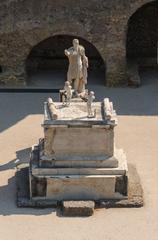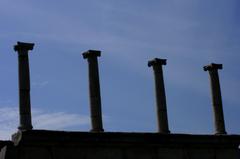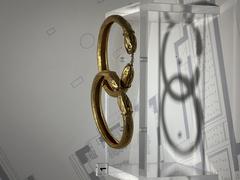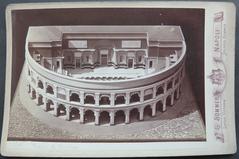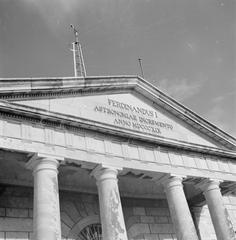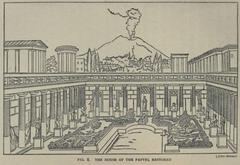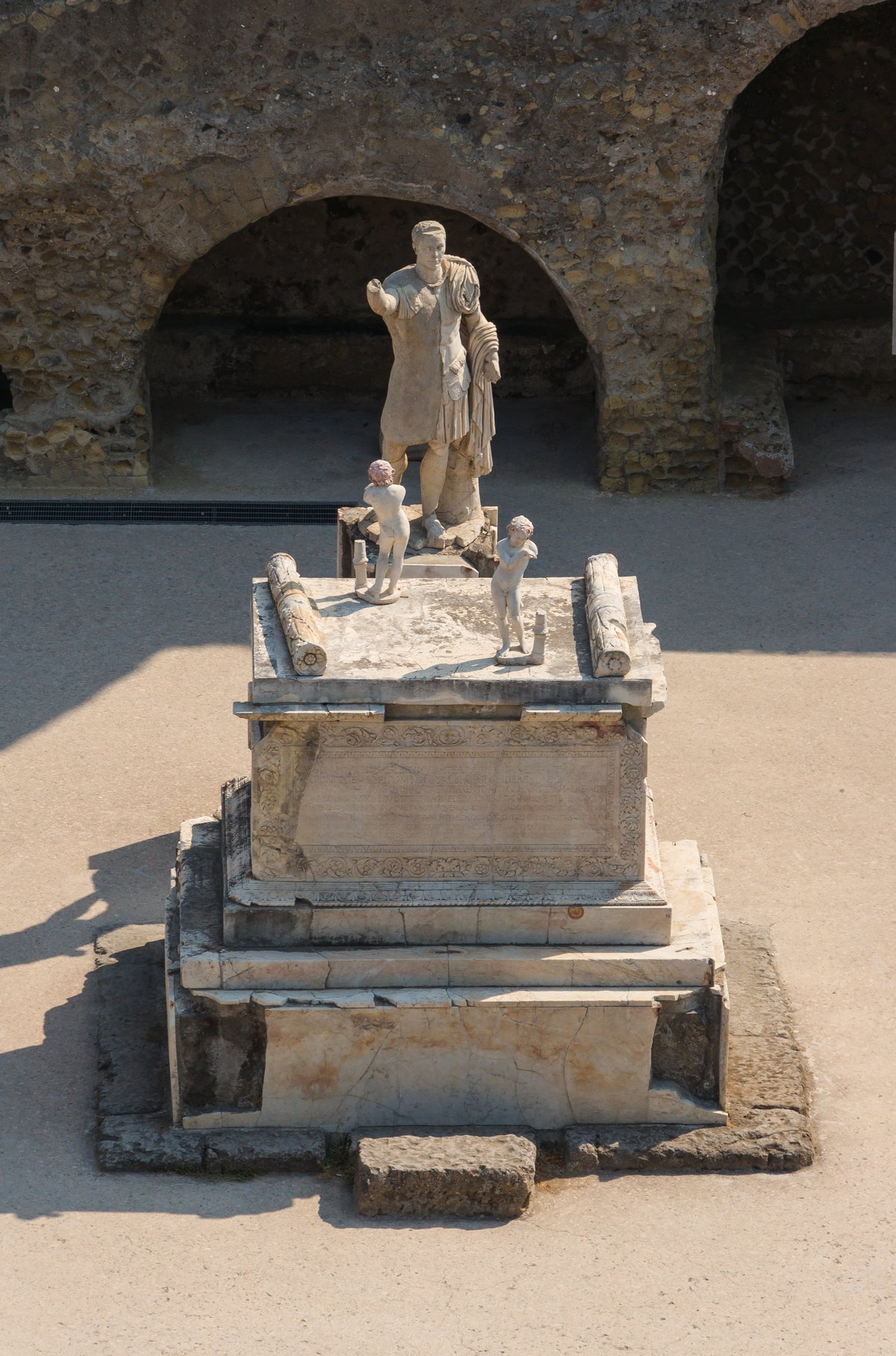
Visiting the Terrace and Altar of M. Nonius Balbus in Herculaneum, Italy: Hours, Tickets, and Historical Insights
Date: 14/06/2025
Introduction: History and Cultural Significance
The Terrace and Altar of Marcus Nonius Balbus at Herculaneum offer an exceptional glimpse into the heart of Roman civic, religious, and social life during the late Republic and early Empire. Situated at the southeastern edge of the Herculaneum Archaeological Park, this monument commemorates M. Nonius Balbus, a distinguished Roman statesman and benefactor. His substantial contributions included the funding and restoration of public works such as the basilica, baths, and city walls, particularly following the earthquake of 62 CE, leaving an indelible mark on the city (Official Archaeological Park of Herculaneum; Herculaneum.uk).
The terrace and altar served as funerary monuments and civic spaces, embodying Roman traditions of euergetism—public generosity in exchange for social status and lasting remembrance. The marble altar, adorned with sculpted funeral figures and a prominent statue of Balbus in military dress, symbolizes Roman ideals of virtue, public service, and the continuity of memory. Overlooking the Bay of Naples, the terrace connects urban, religious, and maritime elements of Herculaneum, making it a must-see for visitors seeking to understand the city’s cultural landscape (RomeArtLover; ErmakVagus).
This guide details everything you need for your visit: opening hours, ticketing, accessibility, historical background, travel tips, and nearby attractions.
Contents
- Who Was Marcus Nonius Balbus?
- Historical and Architectural Highlights
- Visiting Hours and Tickets
- Accessibility and Visitor Experience
- Getting There and Navigation
- Tips for Visitors
- Nearby Attractions
- Frequently Asked Questions (FAQ)
- Summary and Recommendations
- References
Who Was Marcus Nonius Balbus?
Marcus Nonius Balbus was a prominent Roman magistrate from Nuceria, serving as praetor, consul, and proconsul of Crete and Cyrene. He was a key supporter of Octavian (later Augustus) and was honored in Herculaneum as a patron for his generous public works. His enduring legacy is immortalized in the terrace and altar that bear his name, reflecting the gratitude of the city’s people (RomeArtLover; Herculaneum.uk).
Historical and Architectural Highlights
The Terrace
The terrace is an elevated platform overlooking the ancient shoreline and boatsheds, symbolizing Balbus’s status and Herculaneum’s maritime connections. It served as a venue for public ceremonies and processions, linking civic pride with religious ritual.
The Altar and Statue
The marble altar features intricate carvings, including sleeping funeral figures that once held torches—representing the passage to the afterlife. The inscription commemorates Balbus’s contributions and honors, including the right to a bisellium (an honorary folding chair for distinguished citizens). The imposing statue of Balbus, dressed in military attire, epitomizes Roman values of public service and civic benefaction (herculaneum.uk; RomeArtLover).
Layout and Surroundings
The terrace is framed by columns and a balustrade, with views of the Bay of Naples and adjacent sites such as the Suburban Baths and the Sacred Area, which houses shrines to Venus, Vulcan, Mercury, Neptune, and Minerva (ErmakVagus; WorldHistory.org).
Visiting Hours and Tickets
- March 16 – October 14: 8:30 am – 7:30 pm (last entry 6:00 pm; site closes at 7:00 pm)
- October 15 – March 15: 8:30 am – 5:00 pm (last entry 3:30 pm; site closes at 4:40 pm)
- Closed: January 1 and December 25
Ticket Prices (June 2025)
- Adults: €16
- EU Youth (18–25): €2
- Children under 18: Free
- Free for people with disabilities and one companion
Tickets can be purchased online or at the site. Combined tickets with Pompeii and other archaeological sites are also available (Official Archaeological Park of Herculaneum; VisitPompeiiVesuvius).
Accessibility and Visitor Experience
- Wheelchair Access: Two platform paths provide wheelchair access to major areas, including the route toward the terrace. The terrace itself is relatively flat and among the more accessible parts of the site.
- Facilities: Accessible restrooms are available; staff are ready to assist visitors with special needs (VisitPompeiiVesuvius).
Getting There and Navigation
- Location: The terrace is situated near the main entrance at Corso Resina 187, close to the Suburban Baths and Sacred Area.
- Transport: Reachable by Circumvesuviana train (Ercolano Scavi station) from Naples or Sorrento (about 20 minutes from Naples). Buses and taxis are available at the station.
- Orientation: Upon entry, pick up a free map highlighting the terrace (site no. 2). Clear signage in Italian and English helps guide visitors.
Tips for Visitors
- Best Time: Visit early or late in the day for cooler temperatures and fewer crowds.
- What to Bring: Comfortable shoes, sun protection, and water—there are no fountains inside. Photography is allowed (drones are not).
- Guided Tours and Audio Guides: Available in multiple languages and highly recommended for in-depth historical context (herculaneum.uk).
- Family Visitors: The site is family-friendly but supervise children due to uneven surfaces and open drops. The nearby MAV Virtual Archaeological Museum offers interactive experiences for all ages.
Nearby Attractions
-
Within the Park:
- Suburban Baths—Roman bathing culture
- Sacred Area—shrines and temples
- Boatsheds—site of significant archaeological finds
- House of the Stags, House of the Mosaic Atrium—examples of elite Roman residences
-
Outside the Park:
- MAV Virtual Archaeological Museum (multimedia exhibits)
- Mount Vesuvius crater (excursions available)
- Restaurants and shops along Corso Resina
Frequently Asked Questions (FAQ)
Q: What are the visiting hours?
A: See “Visiting Hours and Tickets” above; hours vary seasonally.
Q: Are tickets required?
A: Yes. General admission includes the terrace and altar.
Q: Is the site accessible for wheelchairs?
A: Yes, with accessible routes and staff assistance available.
Q: Can I take photographs?
A: Yes, but drones are prohibited.
Q: Are guided tours available?
A: Yes, both guided tours and audio guides are offered.
Summary and Recommendations
The Terrace and Altar of Marcus Nonius Balbus are essential highlights of Herculaneum, offering a vivid connection to the city’s civic identity, Roman patronage, and artistry. The site’s strategic location, impressive architecture, and accessibility make it a rewarding destination for all visitors. Plan your visit by checking official hours, booking tickets online, and considering guided tours to enhance your understanding (Official Archaeological Park of Herculaneum; VisitPompeiiVesuvius).
For a seamless experience, download the Audiala app for audio guides and interactive maps, and follow official channels for the latest updates. Whether you are a history enthusiast or a first-time visitor, this site offers an immersive journey into the world of ancient Rome.
References
- Official Archaeological Park of Herculaneum
- VisitPompeiiVesuvius.com
- Herculaneum.uk
- RomeArtLover.it
- ErmakVagus.com
- WorldHistory.org
Images and maps:
- Terrace and Altar of Marcus Nonius Balbus overlooking Bay of Naples
- Interactive map and virtual tour links are available on the official site.
